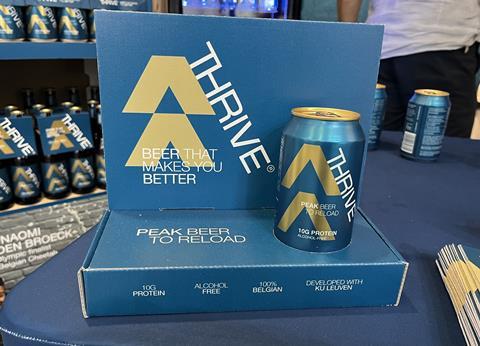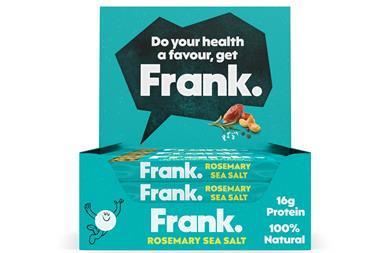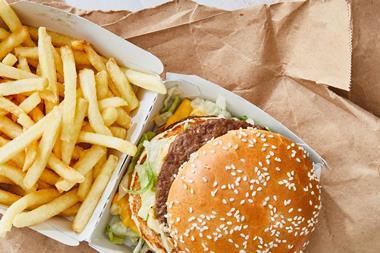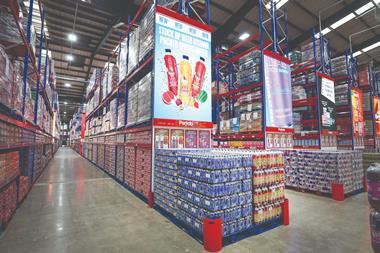It’s been many years since IGD identified ‘health’, ‘convenience’ and ‘indulgence’ as the three key drivers of innovation for food and drink.
Since then, much of the way we shop and eat has changed – from smartphones and social media to the growth of the discounters, austerity and Covid.
Having attended countless international food trade shows and worked with national and international food and drink brands for the past 17 years, we’ve come up with four drivers of NPD we believe will be important for the coming year – and the next decade.
1. Feel better

‘Feel better’ is a richer, more appropriate concept for today than ‘health’. It is a phrase that captures both the emotional and the more practical benefits people are increasingly seeking from food and drink.
It embraces all the different expressions of ‘virtuousness’ that have emerged over the past two decades as consumers seek attributes beyond taste and nourishment.
Foods that have added protein to help fuel recovery or muscle strength, or that contain ingredients like collagen to enhance our skin, are helping us to ‘feel better’.
But so are products that are responsibly sourced, or made from ingredients grown in a sustainable way. Equally the phrase applies to those that come in recyclable or compostable packaging – it’s just that they do so in a way that impacts our attitudes and emotions, rather than physical health.
The rapid rise of plant-based alternatives to meat, dairy and fish is another example of this trend. And again, the emotional benefit – consuming something less harmful to the planet that doesn’t involve farming animals – is the most significant motivator. Examples include:
- Recoup: This New York-based brand has a line of drinks that deliver hydration but also promote muscle recovery, better digestion and immunity through combinations of natural ingredients.
- No Evil Foods: This range of plant-based meat alternative products uses only familiar, natural ingredients “that leave you feeling good both inside and out”.
- Thrive: The Belgian brand has formulated a beer that “makes you better”. It is alcohol-free and contains vitamins and protein to aid the body’s recovery after exercise.
2. Here & now

The explosion in the use of tech has changed the way we shop, and enabled shoppers to acquire food ‘here & now’.
This trend is all about the desire for and expectation of almost instant access to anything we want. Rapid food and grocery delivery services, as well as outlets offering food and drink on the go, make it possible to satisfy this craving. The opening hours of many grocery stores have also been extended to fit better with busy lifestyles.
It’s a trend that also reflects the continued breakdown in conventional meal patterns. ‘Optimised eating’ occasions and frequent snacking have replaced the steady rhythm of ‘breakfast, lunch, dinner’ for many.
Instant, all-in-one, easily portable solutions for breakfast, lunch and snacking reflect the growing desire for food and drink solutions that are more easily incorporated into a hectic working day. Examples include:
- Whoosh from Tesco is a ‘rapid response’ grocery home delivery service that promises to fulfil orders in as few as 20 minutes.
- Picnic is another online grocery delivery business operating in the Netherlands and Germany that has become Europe’s fastest-growing online supermarket.
- Epic Provisions (part of General Mills) has a range of Rise & Grind bars that have turned the traditional breakfast combination of bacon and eggs into compact handheld snacks.
- Spanish brand +42 Degrees has introduced a range of RTD coffee drinks that heat in the can, delivering “a temperature rise of 42°C”.
3. The joy of food

In a world where many have access to plentiful food, and the choices are extensive, those who want to indulge can now be more demanding. The focus has shifted increasingly on to the experience of consumption.
This can be about the full organoleptic experience of a product – how it satisfies all our senses. Or it can be about a ‘flavour adventure’ – something that is now far easier to discover as global cuisines and fusions have become more popular, familiar and more readily available.
It can also be about the theatre of presentation – most obviously within an out-of-home eating experience. But this theatre can also be delivered by the way a food product is presented or packaged, or in the way in which we are encouraged to complete the cooking process by adding final flourishes or seasonings.
Home food recipe kits and recipe boxes enable us to derive the pleasure of creating restaurant-style meals without all the effort of preparation, or the fear of failure.
Elegant packaging and clever or witty designs also marry the delight of visual anticipation with the joy that comes from eating or drinking something really tasty. Examples include:
- Good Hair Day is a dried pasta brand from Germany that has elevated its product through a packaging design that is elegant and impactful.
- Halen Brands has created ‘Joyfuls’, a range of chocolate treats that mix cacao-rich, dark chocolate with fruit, nuts or seeds and a hint of salt to bring pleasure to sweet snacking.
- Food Paint from Noshi in New York – organic food colourants that kids can use to add fun colours to their cake and cookie decorating without their parents having to worry about e-numbers.
4. Right & relevant
Of course, the above drivers rely upon the ability of consumers to make active choices about the food and drink that they buy and consume. Price will always be another key factor in determining these choices.
While recession is, hopefully, a temporary state, the prolonged period of economic difficulty may have a longer-lasting impact on shopping attitudes and behaviours.
We believe that a key underlying principle has also become evident: ‘right & relevant’. This is all about ensuring the products we seek in our supermarkets and online shopping are ‘fit for purpose’. We should instantly understand the role they are seeking to play – from a basic, almost commoditised product that meets needs as cheaply as possible to a more premium, luxury product that offers added value indulgence.
It’s about making sure that products are positioned appropriately, following understood market cues and language, and being clear about their purpose and role. And, of course, ensuring the product inside the pack matches up to that promise.
To some degree, this has always been the case, but it’s even more vital in today’s world.




















No comments yet